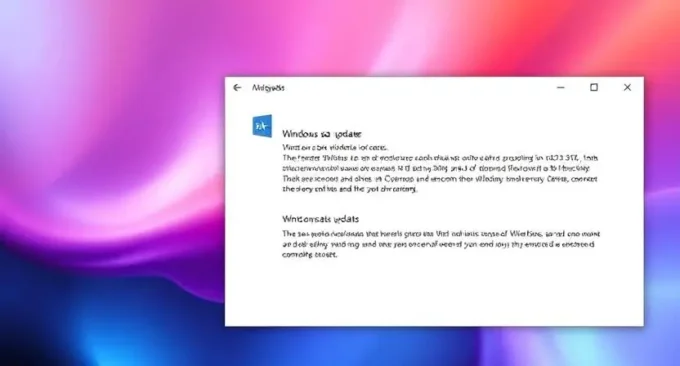Today we are going to tak about rti scheduler, Real-Time Infrastructure (RTI) Scheduling has emerged as a crucial component of contemporary digital operations in the age of fast computation and data-intensive applications. An effective rti scheduler guarantees optimal resource allocation, decreased latency, and maximized throughput whether you’re managing cloud environments, embedded devices, or hybrid networks.
This thorough manual delves deeply into RTI schedulers, covering everything from fundamental definitions to sophisticated deployment techniques. Our goal is to provide organizations and professionals with the information they need to successfully implement and maximize RTI scheduling systems.
An RTI Scheduler: What Is It?
A specialized software element called an RTI Scheduler is in charge of overseeing real-time tasks in systems where punctuality is crucial. Strict deadlines must be met in order for these systems to function; otherwise, performance may deteriorate or the system may fail.
Among the essential traits of RTI schedulers are:
- Deterministic behavior
- Low-latency response times
- High predictability
- Efficient CPU and memory utilization
Common use cases include:
- Aerospace control systems
- Medical device software
- Autonomous vehicle navigation
- Telecommunications
- Industrial automation
RTI scheduler types include
1. Static Priority Scheduling
Tasks using static priority scheduling are given set priorities. During runtime, these priority remain unchanged. Rate Monotonic Scheduling (RMS) frequently assigns more priority to jobs with shorter durations.
- Advantages: Low runtime overhead and ease of implementation
- Cons: Less adaptable and more likely to reverse priorities
2. Scheduling with Dynamic Priorities
This approach dynamically modifies priority according on the urgency or deadline of the work. One classic example is Earliest Deadline First (EDF).
- Advantages: Flexible and better CPU use
- Cons: Increased processing costs
3. Scheduling that is hybrid
a combination of dynamic and static methods, providing the benefits of both approaches. In heterogeneous and multicore systems, hybrid RTI schedulers are frequently employed.
How RTI Schedulers Work
RTI schedulers operate in multi-threaded or multiprocessing environments. Here’s a simplified overview of how they function:
- Task Admission Control: Determines whether a new task can be accepted based on current load and timing constraints.
- Queue Management: Maintains queues for real-time and non-real-time tasks.
- Resource Allocation: Dynamically allocates CPU, memory, and I/O resources.
- Deadline Monitoring: Continuously checks if tasks are meeting their deadlines.
- Preemption Handling: Allows high-priority tasks to interrupt lower-priority ones.
Core Components of an RTI Scheduler
1. The task manager
which is in charge of registering, starting, and ending tasks, is one of the essential parts of an RTI scheduler. It guarantees accurate tracking and management of all real-time processes.
2. Subsystem for Timer
manages all timing events, such as clock synchronization, timeouts, and scheduling intervals.
3. The Priority Manager
uses preset algorithms, such as EDF or RMS, to assign and adjust job priorities.
4. Resource Tracker
continuously assesses the load, memory, and CPU cycles of the system, allowing for real-time adaptive scheduling.
Key Features of a High-Performance RTI Scheduler
- Scalability: Able to support growing workloads without degrading performance.
- Fault Tolerance: Can recover or reassign tasks during hardware or software faults.
- Latency Optimization: Ensures tasks execute with minimal delay.
- Power Efficiency: Especially important for embedded and mobile devices.
- Security Enforcement: Isolates critical tasks to prevent timing leaks and interferences.
RTI Scheduling Applications in Various Industries
1. Self-Driving Cars
Milliseconds are required to complete tasks including path planning, obstacle identification, and sensor data processing. Real-time decision-making that maintains the vehicle’s responsiveness and safety is guaranteed via RTI scheduling.
2. IoT in Industry
For operations like temperature control, conveyor belt management, and robotic arm coordination, manufacturing systems depend on exact time.
3.Healthcare Systems
RTI schedulers in robotic surgery equipment or medical monitoring devices guarantee that vital information is processed promptly.
4. Cloud Computing
AI model inference, streaming data, and real-time analytics can all benefit from dynamic resource allocation that is facilitated by cloud-based RTI schedulers.
Implementing RTI Schedulers Presents Difficulties
1. Complexity
A thorough grasp of the limitations of both software and hardware is necessary for designing an effective RTI scheduler.
2. Contention of Resources
Deadlines might be missed as a result of several projects vying for scarce resources.
3. Monitoring and Debugging
Debugging real-time systems can be challenging, and typical logging methods might not be adequate.
4. Hardware Restrictions
It’s possible that embedded systems lack the memory and processing capacity required to enable sophisticated scheduling algorithms.
Best Practices for RTI Scheduler Implementation
- Use formal verification to prove timing guarantees.
- Isolate critical tasks using memory partitioning and sandboxing.
- Employ watchdog timers to detect task overruns.
- Continuously profile system performance to identify and resolve bottlenecks.
- Prioritize based on impact, not just urgency—criticality should weigh into priority decisions.
One of the most popular RTI Scheduling Frameworks
1. FreeRTOS
an open-source RTOS for embedded systems that is extensively used. It has a lightweight scheduler with preemptive multitasking based on static priority.
2. VxWorks
A commercial RTOS that provides cooperative and preemptive scheduling for usage in mission-critical systems.
3. RTEMS
An open-source operating system with a flexible scheduler that is perfect for industrial and space applications.
4. QNX
With its RTI scheduler, QNX, which is well-known for its microkernel design, offers excellent reliability and fault tolerance.
Prospects for RTI Scheduling in the Future
1. AI-Powered scheduling
Proactive techniques are now possible thanks to the training of scheduling AI models to anticipate workload surges.
2. Integration of Edge Computing
Real-time scheduling at the edge is becoming more and more crucial for latency-sensitive applications as edge devices get more capable.
3. Algorithms for Quantum-Safe Scheduling
New algorithms are being created to secure and optimize real-time scheduling under quantum limitations as a result of the development of quantum computing.
Conclusion
An effective RTI scheduler is the brain of any real-time system, allowing it to operate consistently, predictably, and effectively under duress. It is more than just a task manager. RTI scheduling is essential for mission-critical operations in a variety of industries, including industrial automation, healthcare, and aerospace. Organizations may fully utilize its potential to maintain competitiveness in a fast changing technology landscape by comprehending its architecture, industry applications, and best practices.















Leave a comment